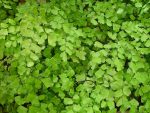This post contains affiliate links. If you buy something from one of our links we may earn a commission. Thanks
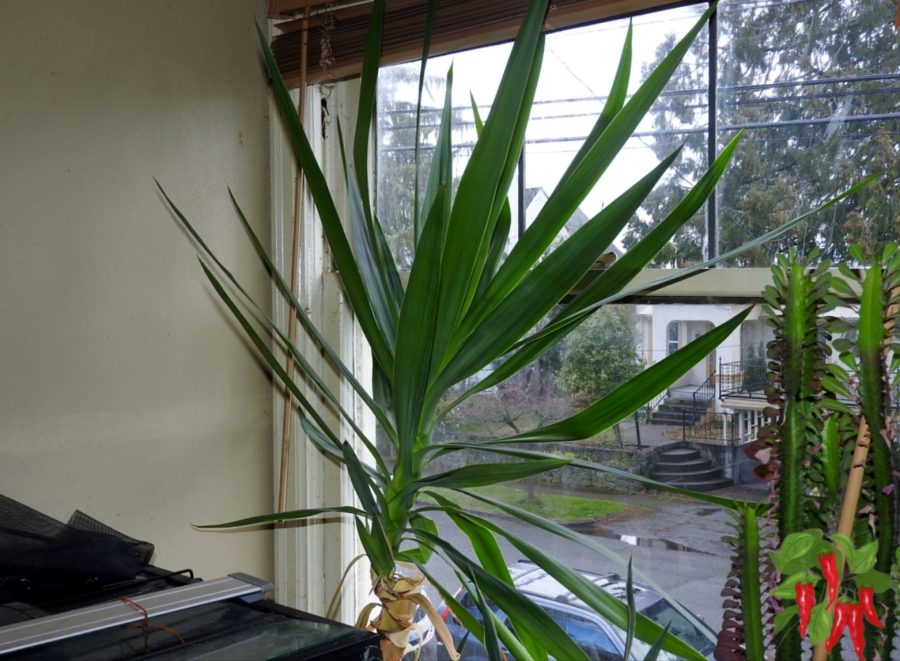
Discover the secrets of Elephant Yucca Plant Care with our fun, easy-to-follow guide! Master watering, sunlight, and more to grow a thriving plant.
Elephant Yucca Plant care involves placing the plant in a location with full sun to partial shade and well-drained soil. Watering should be moderate, allowing the soil to dry out between waterings. This low-maintenance plant is drought-tolerant and generally resistant to pests, making it a straightforward choice for both beginners and experienced gardeners.
Welcome to the fascinating world of Elephant Yucca Plant Care!
If you’re looking to add a touch of the exotic to your indoor space, look no further than the stunning Yucca elephantipes.
This versatile plant makes a striking statement and, with the right yucca elephantipes indoor care, it can thrive in your home for years to come.
Join us on this botanical journey as we explore the ins and outs of nurturing your very own Elephant Yucca, turning you into a true plant whisperer in no time!
So, you’re interested in Elephant Yucca Plant Care, huh? Great choice!
You know, Yucca elephantipes is such a unique and eye-catching plant that can really jazz up your indoor space.
Don’t worry, taking care of this beauty is easier than you might think.
Stick around, and we’ll chat about all the tips and tricks for keeping your Yucca elephantipes happy and healthy indoors.
Trust me, you’ll be a green-thumbed guru in no time!
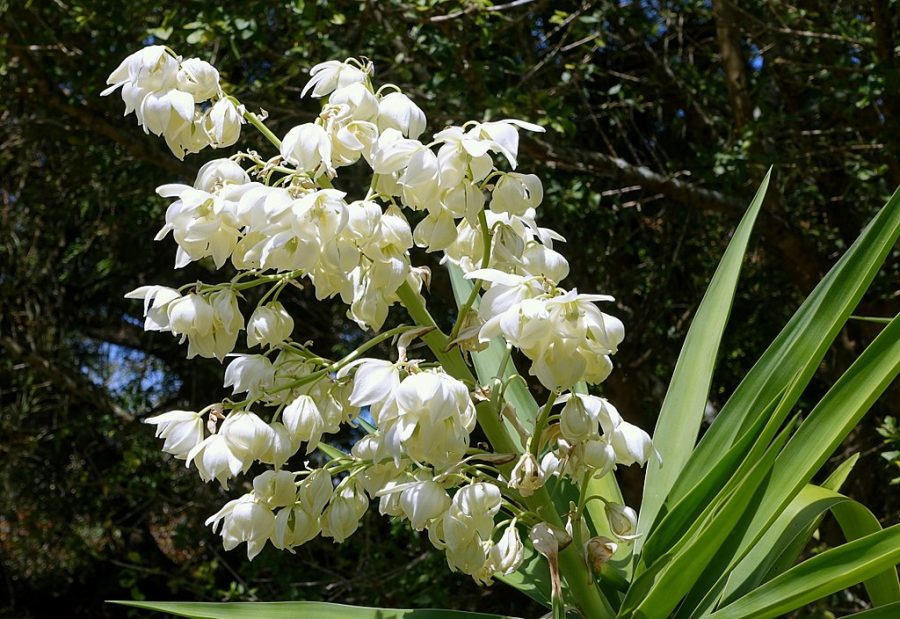
The Ultimate Guide to Elephant Yucca Plant Care
You might be wondering, “What’s so special about this plant?” Well, you’re in for a treat!
The Elephant Yucca, or Yucca elephantipes, is an exotic and captivating plant that adds a touch of intrigue to any space.
Today, we’ll be diving into everything you need to know to keep your Yucca thriving, whether it’s indoors or outdoors.
So, grab a cup of your favorite brew, and let’s embark on this exciting plant care journey together!
Meet the Elephant Yucca
Ah, the Elephant Yucca, a true gem in the plant world.
It’s a striking, low-maintenance plant known for its sturdy, cane-like stems and sword-shaped leaves.
The best part about Elephant Yucca plant care? It can grow indoors and outdoors, making it a versatile addition to your plant family.
From Wikipedia: Yucca gigantea (syn. Yucca elephantipes) is a species of flowering plant in the asparagus family, native to Mexico and Central America.
Growing up to 8–12 m (26–39 ft) in height, it is an evergreen shrub which is widely cultivated as an ornamental garden or house plant, often referred to simply as yucca cane.
The edible flower is the national flower of El Salvador locally called izote, and it is used extensively in Salvadoran cuisine. Common names include spineless yucca, soft-tip yucca, blue-stem yucca, giant yucca, yucca cane, and itabo.
The Key to a Healthy Elephant Yucca: Proper Care
Like all plants, our friend the Elephant Yucca needs some love and attention. By understanding its specific care requirements, you’ll ensure that your plant grows strong, healthy, and happy.
And let’s be honest, a thriving Elephant Yucca is a real conversation starter!
Why You’re Here: The Blog Post’s Purpose
So, why are we gathered here today? Simple to talk about Elephant Yucca plant care.
We want to make sure you have all the know-how to give your Elephant Yucca the best possible care.
This blog post will walk you through everything, from planting to maintenance, so you can become the ultimate plant caretaker.
Get ready to level up your green thumb skills!
Background Information
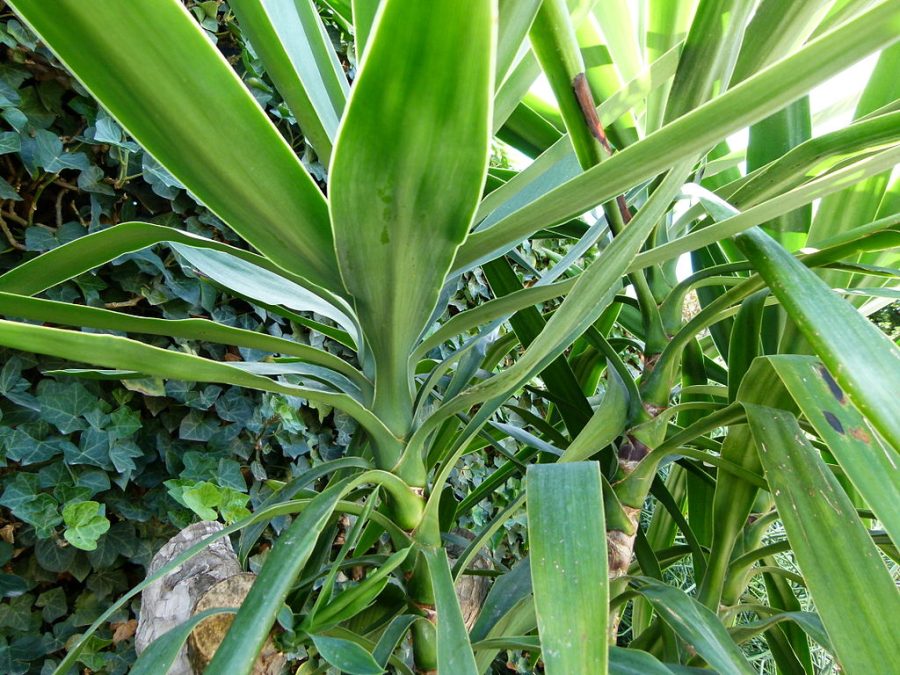
Welcome to the backstory of our leafy friend, the Elephant Yucca!
Before we dive into the nitty-gritty of plant care, it’s always nice to get to know a bit more about our green companions.
Understanding where they come from and what makes them unique can give us valuable insights into their care needs.
So, let’s take a quick trip through the fascinating world of Elephant Yucca’s origin, characteristics, and growth habits.
By the end of this journey, you’ll feel like you’ve known this amazing plant your whole life!
Hailing from Faraway Lands: Origin and Natural Habitat
The Elephant Yucca, or Yucca elephantipes, is native to the arid regions of Central America, particularly Mexico and Guatemala.
This plant has evolved to thrive in dry environments, making it a perfect low-maintenance choice for your home or garden.
What Makes the Elephant Yucca Stand Out: Characteristics and Features
• A Tall Order: Size and Shape
The Elephant Yucca can grow quite tall, reaching heights of up to 30 feet in its natural habitat.
But don’t worry, indoors, it usually maxes out at around 6 to 8 feet.
Its unique structure features thick, woody stems that resemble elephant legs, supporting a gorgeous crown of leaves.
• Show-Stopping Leaves and Flowers
This plant’s long, sword-like leaves are a true show-stopper. They’re evergreen, which means they’ll keep their vibrant color all year round.
And when it’s time to bloom, the Elephant Yucca produces beautiful clusters of creamy-white flowers on tall stalks, adding a touch of elegance.
• Slow and Steady: Growth Habits
Patience is a virtue when it comes to Elephant Yucca’s growth.
This plant has a relatively slow growth rate, meaning it won’t outgrow your space too quickly.
Its easygoing nature and resilience make it an ideal choice for both beginners and experienced plant enthusiasts alike.
Yucca Elephantipes Indoor Care
So are you ready to dive into the world of Yucca elephantipes indoor care?
These striking, low-maintenance plants make a fabulous addition to any living space, bringing a touch of desert charm right into your home.
Whether you’re new to the plant game or a seasoned green thumb, this guide is your one-stop shop for all things Yucca elephantipes.
With our expert tips, you’ll be well on your way to ensuring your indoor Yucca thrives and continues to turn heads for years to come.
So, let’s get started and unlock the secrets to mastering Yucca elephantipes indoor care!
Planting and Soil Requirements
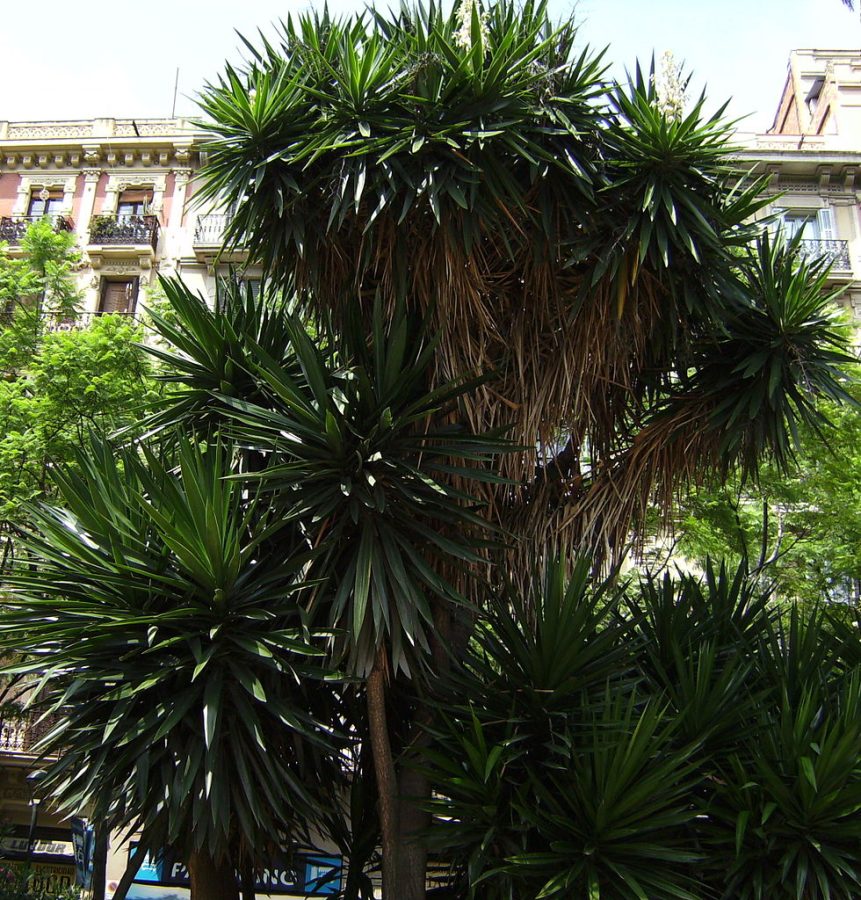
Ready to bring an Elephant Yucca into your life? Awesome! Before you do, let’s talk about planting and soil requirements.
You see, this plant may be low-maintenance, but it still has preferences when it comes to its living conditions.
By giving your Elephant Yucca the right soil and planting environment, you’re setting it up for success from day one.
So, let’s dig into the dirt (pun intended) and uncover the secrets to creating the perfect home for your soon-to-be favorite plant!
Perfect Timing: Ideal Time for Planting
When it comes to planting your Elephant Yucca, timing can be crucial.
The best time to plant or repot is during the spring or early summer.
This gives your plant plenty of time to establish its roots before colder weather arrives, ensuring healthy and robust growth.
Getting Dirty: Soil Type and Composition
Don’t Drown the Roots: Drainage Requirements
Elephant Yuccas are accustomed to dry environments, so well-draining soil is a must. If you prefer growing in coco coir, you’re in luck!
It’s an environmentally friendly choice that provides excellent drainage.
Just mix it with some perlite or pumice to create the perfect well-draining blend for your Yucca.
Striking the Right Balance: pH Levels
Elephant Yuccas aren’t too picky about soil pH, but they do prefer a slightly acidic to neutral range.
Aim for a pH between 5.5 and 7.5. Regularly testing your soil can help you maintain the ideal conditions for your plant to thrive.
Coco coir is an ideal potting medium with a natural of about pH of 6.0
Digging Deeper: Planting Depth and Spacing
When it comes to planting your Elephant Yucca, depth and spacing matter.
Plant your Yucca at the same depth as it was in its previous container, ensuring the base of the stem is level with the soil surface.
As for spacing, make sure to give your Yucca enough room to grow. If planting multiple Yuccas outdoors, space them at least 6 feet apart to accommodate their future growth.
Indoors, just make sure your pot is large enough to support your Yucca as it grows taller and wider.
Watering and Fertilization
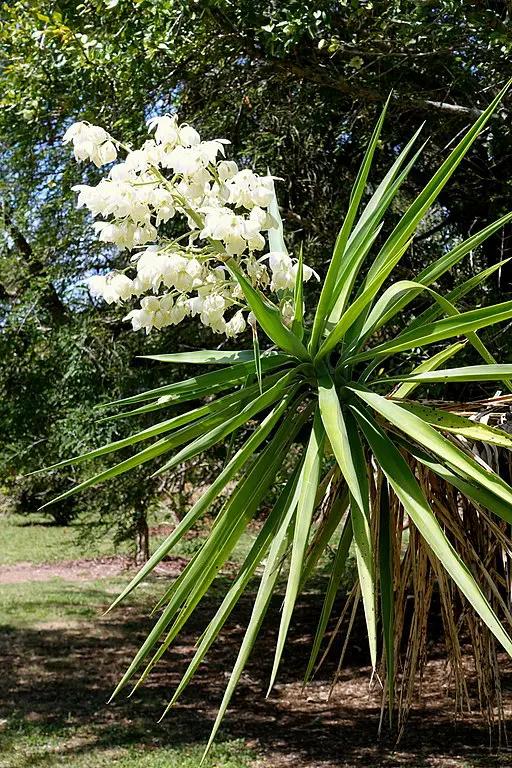 Alright, now that we’ve got the planting and soil sorted, it’s time to talk about the lifeblood of your Elephant Yucca: water and nutrients!
Alright, now that we’ve got the planting and soil sorted, it’s time to talk about the lifeblood of your Elephant Yucca: water and nutrients!
Nailing the balance between watering and fertilization is essential for a happy, healthy plant.
But don’t stress, we’re here to guide you every step of the way.
So, let’s dive into the wonderful world of watering and fertilization, and help you become the ultimate Yucca whisperer.
Trust us, your new leafy friend will thank you for it!
The Perfect Drink: Watering Frequency and Techniques
Elephant Yuccas prefer a good soak followed by a chance to dry out.
Generally, water your Yucca every 1-2 weeks in warmer months and every 3-4 weeks in cooler months.
However, always check the soil first – if it’s still damp an inch below the surface, hold off on watering.
Staying Vigilant: Signs of Over-watering or Under-watering
Over-watering can lead to root rot, causing yellowing leaves and a wilting appearance.
Underwatering may result in browning leaf tips and drooping leaves. Keep an eye out for these signs and adjust your watering schedule accordingly.
Feeding Time: Fertilizer Types and Application
Slow and Steady: Slow-Release Fertilizers
A slow-release fertilizer is a great option for your Elephant Yucca. Apply it during the growing season (spring and summer) following the package instructions. This will provide a consistent supply of nutrients over several months.
Quick Boost: Liquid Fertilizers
Liquid fertilizers offer a rapid nutrient boost. Dilute the fertilizer according to the package directions and apply it when you water your Yucca during the growing season.
Be careful not to overdo it – too much fertilizer can harm your plant.
The Right Diet: Nutrient Requirements and Deficiency Signs
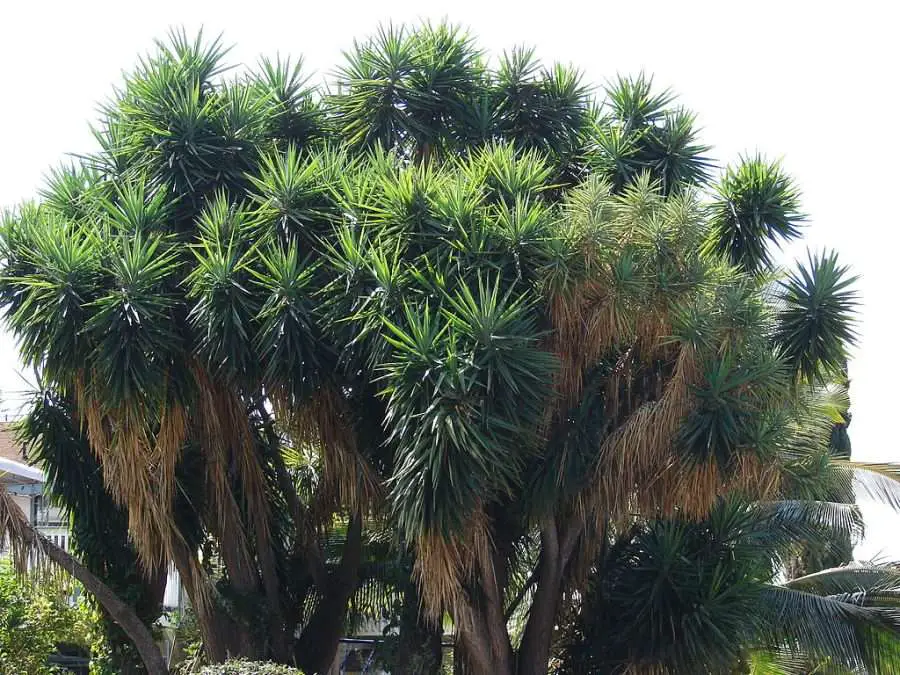
Elephant Yuccas need a balanced fertilizer that includes nitrogen, phosphorus, and potassium, and all necessary micronutrients.
A deficiency in any of these nutrients can cause problems like weak growth or discolored leaves.
If you notice any unusual changes in your Yucca’s appearance, it might be time to reassess its nutrient intake
Best Pots For Yucca Plants
Choosing the right pot for your Yucca elephantipes can greatly impact its health and well-being. When selecting a pot, consider the following factors:
Material:
Pots made from terracotta, ceramic, or plastic are all suitable options.
Terracotta and ceramic pots are more porous and provide better air circulation to the roots, while plastic pots are lightweight and retain moisture longer.
Consider your watering habits and the humidity levels in your home when making a decision.
Drainage:
It’s crucial to use a pot with drainage holes to prevent waterlogging and root rot.
Good drainage is essential for the health of your Yucca elephantipes, as it prefers well-draining soil and doesn’t like sitting in wet conditions.
Size:
Choose a pot that is slightly larger than the root ball of your plant, ideally 1-2 inches larger in diameter.
This allows for adequate room for growth without causing the plant to become root-bound.
Keep in mind that a pot that is too large may lead to over-watering, as the excess soil can hold more moisture.
Weight:
Yucca elephantipes can grow quite tall, so you may want to opt for a heavier pot, like a ceramic one, to provide stability and prevent the plant from toppling over as it grows.
Aesthetics:
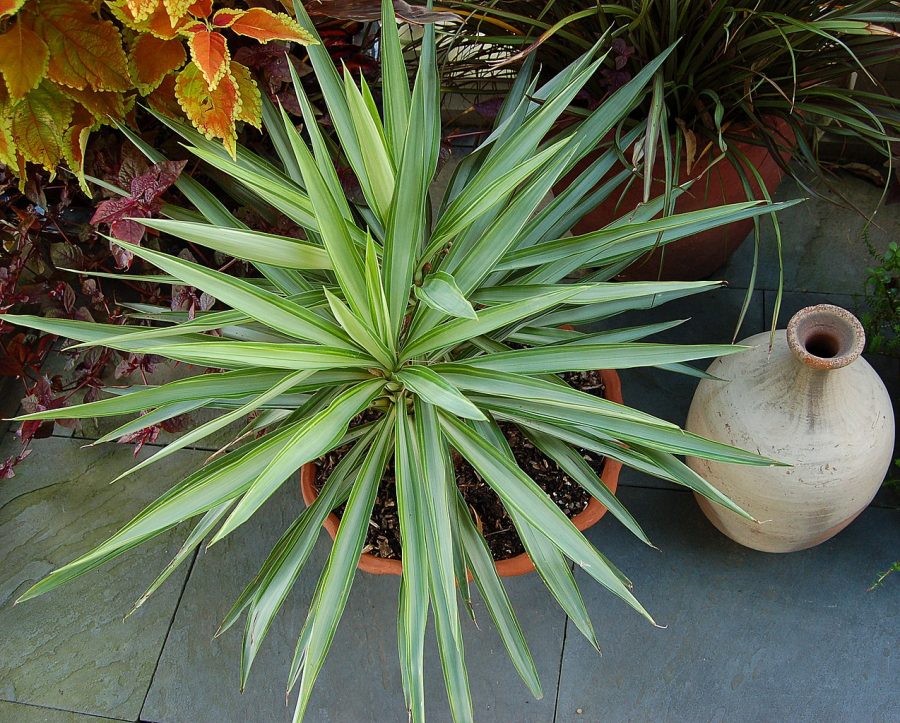
Of course, consider the design and color of the pot to ensure it complements your interior decor and enhances the overall appearance of your Yucca elephantipes.
By taking these factors into account, you can choose the perfect pot for your Yucca elephantipes, ensuring its health and happiness while adding a stylish touch to your indoor space
Light and Temperature Requirements
Let’s shine a light on another important aspect of Elephant Yucca care: light and temperature!
Just like us, plants have their preferences when it comes to staying cozy and getting enough sunshine.
By understanding your Elephant Yucca’s light and temperature needs, you’ll create the perfect environment for it to flourish.
So, let’s get ready to bask in the warm glow of knowledge and ensure your Yucca lives its best, sun-drenched life!
Soaking Up the Rays: Optimal Sunlight Exposure
Elephant Yuccas love bright, indirect sunlight. Place your plant near a sunny window, but avoid harsh direct sun, which can scorch the leaves.
Aim for at least 6 hours of bright, indirect light per day to keep your Yucca smiling.
I keep mine in an East-facing window so they get bright sunlight for a few hours each day and bright indirect light for the rest.
Feeling Cozy: Temperature Ranges for Healthy Growth
Your Elephant Yucca prefers temperatures between 60-80°F (15-27°C) during the day and slightly cooler at night.
Keep your Yucca away from drafts, air vents, and heaters, as sudden temperature changes can stress the plant.
Adapting to the Environment: Adjusting Care for Indoor and Outdoor Plants
For indoor plants, maintain a consistent temperature and light environment throughout the year.
If you’re growing your Yucca outdoors, remember that it’s not frost-tolerant.
In colder climates, move your plant indoors or provide protection during freezing temperatures.
And whether indoors or outdoors, always ensure your Yucca gets enough bright, indirect sunlight to thrive.
USDA hardiness zones for growing outdoors and lowest temperatures
Elephant Yuccas are best suited for growing outdoors in USDA Hardiness Zones 9 to 11. These zones typically experience minimum winter temperatures ranging from 20°F to 40°F (-6°C to 4°C).
While Elephant Yuccas can tolerate some light frost and brief cold snaps, they are not frost-hardy plants.
Prolonged exposure to freezing temperatures can cause damage or even kill the plant.
If you live in an area where frost is a concern, it’s best to grow your Elephant Yucca in a container so you can move it indoors or to a sheltered location during cold spells.
Alternatively, you can provide frost protection by covering the plant with a frost cloth or blanket when freezing temperatures are expected.
Pruning and Maintenance
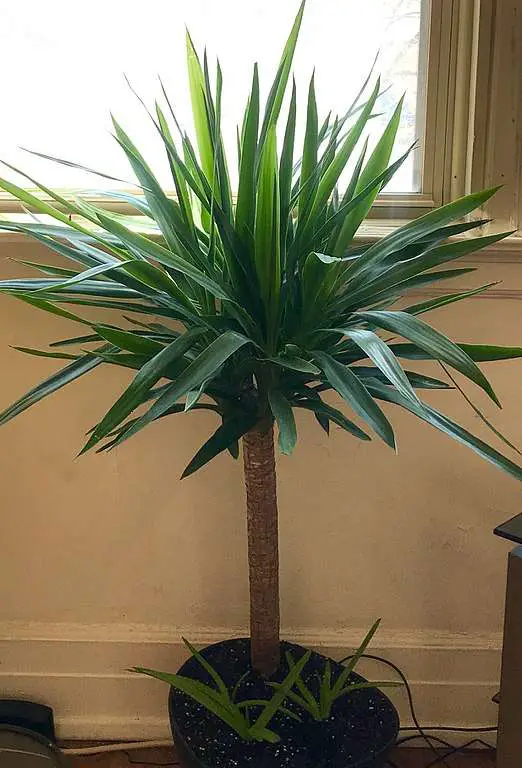
Now that we’ve covered the basics of caring for your Elephant Yucca, let’s talk about keeping it looking its best!
Pruning and maintenance play a crucial role in your plant’s overall health and appearance.
Don’t worry, though – with a few simple tips and tricks, you’ll be a pro at keeping your Yucca in tip-top shape.
So, let’s dive into the art of pruning and maintenance, and help you keep your Elephant Yucca looking sharp and stunning all year round!
The Perks of Pruning: Benefits of Pruning
Pruning your Elephant Yucca offers several advantages, such as promoting a clean, sculpted appearance, encouraging bushier growth, and removing dead or damaged leaves.
Regular pruning also helps maintain the plant’s overall health by improving airflow and preventing the spread of pests or diseases.
Snip, Snip: Pruning Techniques and Tools
To prune your Elephant Yucca, use a clean, sharp pair of pruning shears or scissors.
Remove any dead, damaged, or yellowing leaves by cutting them at the base of the stem.
If your plant becomes too tall or leggy, you can trim the main stem to your desired height. Just remember, any drastic pruning can affect the plant’s growth, so proceed with caution.
Timing is Everything: Time of the Year for Pruning
The best time to prune your Elephant Yucca is during the late winter or early spring, just before the new growth season begins.
However, you can remove dead or damaged leaves at any time of the year to keep your plant looking fresh and tidy.
Keeping Pests at Bay: Pest Control and Prevention
Elephant Yuccas can occasionally attract pests like mealybugs, spider mites, or scale insects.
Regularly inspect your plant for any signs of infestations. If you spot pests, treat them promptly by wiping the affected areas with a cloth dipped in a mixture of water and a few drops of dish soap.
In severe cases, you may need to use a suitable insecticidal spray or neem oil.
To prevent future infestations, maintain good air circulation around your plant, avoid over-watering, and keep the foliage clean and dust-free.
Propagation and Repotting
Feeling confident about your Elephant Yucca care skills? Great! Now it’s time to explore the exciting world of propagation and repotting.
Imagine sharing the love by gifting baby Yuccas to your friends, or giving your beloved plant a roomier home to grow.
Trust us, your Elephant Yucca will thank you for it! So, let’s dive into the ins and outs of propagation and repotting, and help you spread the joy of these gorgeous plants even further.
Growing the Family: Propagation Methods
Baby Steps: Offshoots
One of the easiest ways to propagate your Elephant Yucca is through offshoots, also known as pups.
Carefully remove a pup from the base of the parent plant, ensuring it has some roots attached.
Plant it in a well-draining soil mix and water it sparingly until it establishes itself.
Going the Distance: Seeds
Growing Elephant Yucca from seeds is another option, although it’s a slower process.
Plant the seeds in a well-draining soil mix and maintain a warm temperature and high humidity.
Keep the soil moist, but not wet, until the seeds germinate. Be patient, as germination can take several weeks.
How I Propagate My Elephant Yucca
My soft tipped Yucca roots very easily. My plants have never made pups but when they get too tall I can top them above a healthy node which encourages new side shoots.
I can use even large stem cuttings from pruning it and I just stick them in a pot of coco coir. They always root for me in coco coir.
Since my Elephant Yucca roots easily from large stem cuttings, I use this method to propagate new large plants.
I have tried putting them outside and while the top will die during the winter they will sometimes send up a new shoot in spring.
Unfortunately, these usually don’t have much time to develop before cold weather comes again.
Here’s what I do
I Start by taking a healthy stem cutting from my Elephant Yucca, ideally a foot or two long.
Making sure the cutting is taken from a mature, disease-free plant. Use a clean, sharp pair of pruning shears to make the cut.
Remove the lower leaves from the cutting, leaving the top leaves intact. I usually end up with a bare stem 6-12 inches long.
This will help direct the cutting’s energy toward root development.
Prepare a pot with well-draining coco coir mixed with perlite or pumice. Make sure the pot has drainage holes to prevent waterlogging.
Dip the cut end of the stem in rooting hormone (optional), which can help speed up the rooting process.
But I usually don’t do this, I just stick the bare stem in coco coir up to the bottom leaves.
Water the cutting sparingly to keep the coco coir mix slightly moist but not soggy. Overwatering can lead to rot and impede the rooting process.
Place the pot in a bright, indirect light location and maintain a temperature around 70-75°F (21-24°C) to encourage rooting.
Be patient! It may take several weeks for the cutting to establish roots. Once you see new growth, it’s a good indication that the cutting has rooted successfully.
After your cutting has rooted and started to grow, continue with the regular Elephant Yucca care routine, including watering, fertilizing, and providing the right light conditions.
Room to Grow: Steps for Successful Repotting
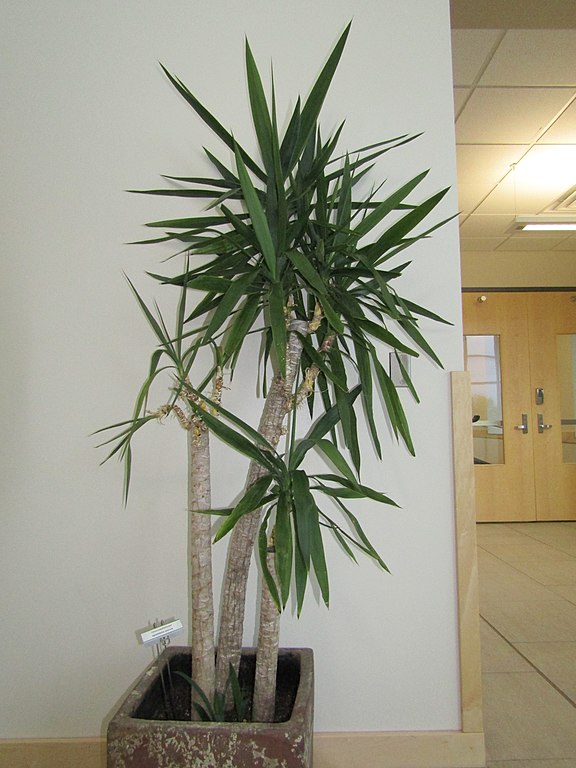
Choose a new pot that is 1-2 inches larger in diameter than the current pot, ensuring it has drainage holes.
Carefully remove the Yucca from its current pot, trying not to damage the roots.
Place a layer of well-draining soil mix (like your coco coir blend) in the new pot.
Position the Yucca in the new pot, filling in the gaps with more soil mix.
The base of the stem should be level with the soil surface.
Water the plant thoroughly to help it settle into its new home.
Time for a Change: Signs That It’s Time to Repot
Your Elephant Yucca will typically need repotting every 2-3 years. Signs that it’s time to repot include:
Roots growing out of the drainage holes or wrapping around the surface of the soil.
The plant becomes top-heavy or unstable.
The soil dries out too quickly after watering, indicating that the roots are taking up most of the space in the pot.
Troubleshooting Common Indoor Yucca Plant Problems
As with any plant, sometimes things don’t go quite as planned with your Elephant Yucca – but don’t worry!
In this section, we’ll explore common issues you might encounter while caring for your leafy friend.
With a little troubleshooting and some tender loving care, you can help your Yucca bounce back from these setbacks.
So, let’s put on our plant detective hats and tackle these challenges together.
After all, we’re here to ensure your Elephant Yucca thrives and grows happily by your side!
Mellow Yellow: Yellowing Leaves
Yellowing leaves on your Elephant Yucca could be a sign of over-watering, under-watering, or nutrient deficiencies.
Check the soil moisture and adjust your watering schedule accordingly. Also, make sure you’re providing the right nutrients through regular fertilization.
Soggy Situation: Root Rot
Root rot is often caused by over-watering or poor drainage. If you notice a foul smell, blackened roots, or wilting leaves, root rot might be the culprit.
To save your plant, remove it from the pot, trim away the affected roots, and repot it in fresh, well-draining soil. Be mindful of your watering habits moving forward.
Tip-top Troubles: Leaf-tip Browning
Browning leaf tips can be a sign of under-watering or low humidity.
Ensure you’re providing consistent moisture and consider increasing humidity by placing a tray of water near your plant or using a humidifier.
Be careful not to overdo it, as excessive humidity can lead to other issues.
Unwanted Guests: Pests and Diseases
Elephant Yuccas can attract pests like mealybugs, spider mites, or scale insects.
Regularly inspect your plant and treat any infestations promptly. You can wipe the affected areas with a cloth dipped in a mixture of water and dish soap or use insecticidal spray or neem oil for more severe cases.
To prevent diseases, keep your plant clean, avoid over-watering, and ensure good air circulation around the plant.
Fun Facts and Trivia
Ready for a little fun? In this section, we’re going to explore some fascinating facts and trivia about your Elephant Yucca.
Impress your friends with your newfound knowledge or simply revel in the wonder of the plant world.
After all, there’s always more to discover about these amazing, leafy companions.
So, let’s dive into the captivating world of Elephant Yucca trivia and uncover some intriguing tidbits that’ll make you love your plant even more!
Time Traveler: Elephant Yucca in History and Culture
The Yucca genus has a rich history and has been an integral part of many cultures, particularly those native to the Americas.
While the Elephant Yucca (Yucca elephantipes) might not be as prominent as its cousins in historical records, the entire Yucca family has played significant roles in traditional medicine, ceremonies, and even cuisine.
Multitalented Marvel: Uses and Benefits
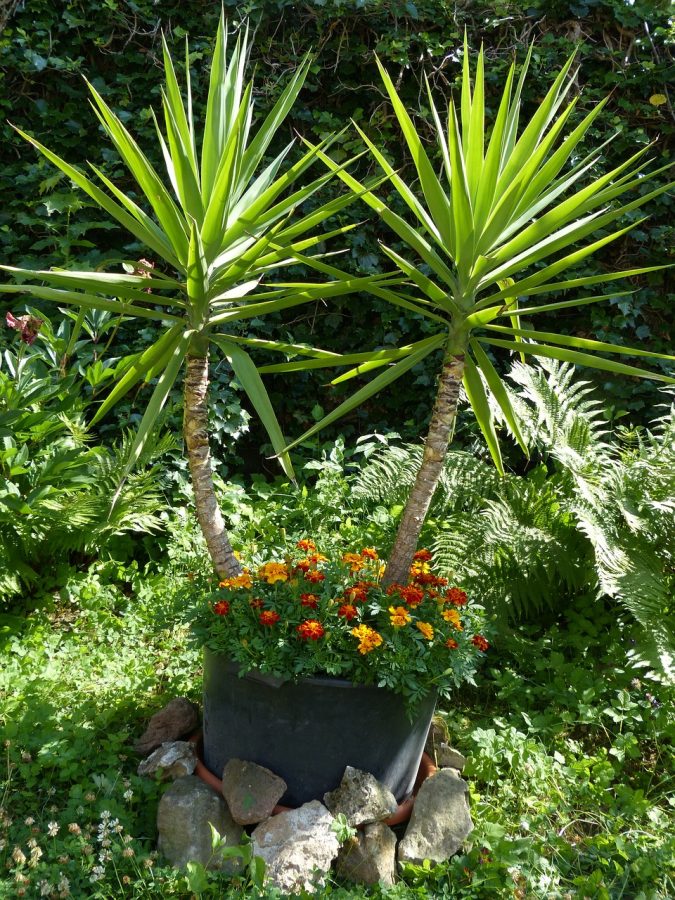
Ornamental Beauty: Elephant Yuccas are widely appreciated for their striking appearance, making them popular choices for both indoor and outdoor landscaping.
Their sculptural form and tall, sturdy trunks add a touch of desert charm to any space.
Air Purification:
Like many other plants, Elephant Yuccas can help purify the air by absorbing toxins and releasing fresh oxygen.
This makes them not only beautiful additions to your home but also beneficial for your well-being.
Low-Maintenance Superstar:
Thanks to their drought-tolerant nature, Elephant Yuccas make excellent choices for busy plant enthusiasts or those with a less-than-green thumb.
Their resilience and adaptability allow them to thrive in a variety of conditions, making them a favorite for those new to plant care or those who appreciate fuss-free greenery.
Elephant Yucca FAQs
If you’ve ever been curious about the versatile Yucca elephantipes, commonly known as the Elephant Yucca Plant, you’re in the right place.
This adaptable plant can thrive both indoors and outdoors, making it an excellent choice for a variety of settings.
Let’s dive into some frequently asked questions to clarify how best to care for this sturdy and attractive plant.
Q: How do you take care of a yucca elephant plant?
A: The Elephant Yucca Plant is fairly easy to care for. Place it in well-drained soil and in a location that gets full sun to partial shade. Water it moderately, allowing the soil to dry between waterings.
Q: Is Yucca elephantipes indoor or outdoor?
A: Yucca elephantipes can be grown both indoors and outdoors. It’s quite versatile, making it a popular choice for both home interiors and gardens. However, it is not frost-hardy.
Q: Do Yucca elephantipes like sun or shade?
A: These plants prefer full sun to partial shade. However, if you’re keeping it indoors, placing it near a south-facing window would be ideal.
Q: How do you care for a yucca plant indoors?
A: When kept indoors, make sure to place your Yucca elephantipes near a window that receives plenty of light.
Water it moderately, allowing the soil to dry out between waterings.
You may also want to consider a well-draining potting mix to prevent root rot.
Elephant Yucca Plant Care Final Thoughts
Well, folks, we’ve reached the end of our Elephant Yucca Plant Care journey together!
We hope that you’ve found this guide insightful and that it helps your leafy buddy thrive for years to come.
Remember, it’s all about observing, learning, and adapting to your plant’s unique needs.
As you apply these tips and tricks, you’ll become a true Elephant Yucca whisperer in no time!
So, go ahead, embrace your green thumb, and enjoy the rewarding experience of caring for this striking and resilient plant. Happy growing!
Quick Recap: Elephant Yucca Plant Care Key Tips for Success
Planting: Choose well-draining soil, like a coco coir blend, and plant at the right depth and spacing.
Watering: Maintain a consistent watering schedule, avoiding over-watering or under-watering.
Light and Temperature: Provide bright, indirect light and a temperature range of 65-75°F (18-24°C) for optimal growth.
Fertilizing: Supply your plant with proper nutrients by using slow-release or liquid fertilizers.
Pruning and Maintenance: Regularly prune your plant to maintain its shape and health.
Propagation: Use stem cuttings or offshoots to create new plants, rooting them in a well-draining coco coir mix.
Troubleshooting: Be aware of common issues like yellowing leaves, root rot, and pests, and address them promptly.
You’ve Got This: Encouragement for Aspiring Elephant Yucca Owners
Embarking on the journey of yucca elephantipes indoor care can seem intimidating at first, but remember, every plant owner learns and grows alongside their leafy friends.
Trust your instincts, apply the knowledge you’ve gained, and don’t hesitate to ask for help or advice when needed.
With patience, dedication, and a little love, you’ll soon master the art of caring for your Elephant Yucca.
So go on, embrace this rewarding experience, and welcome a wonderful new addition to your plant family!





